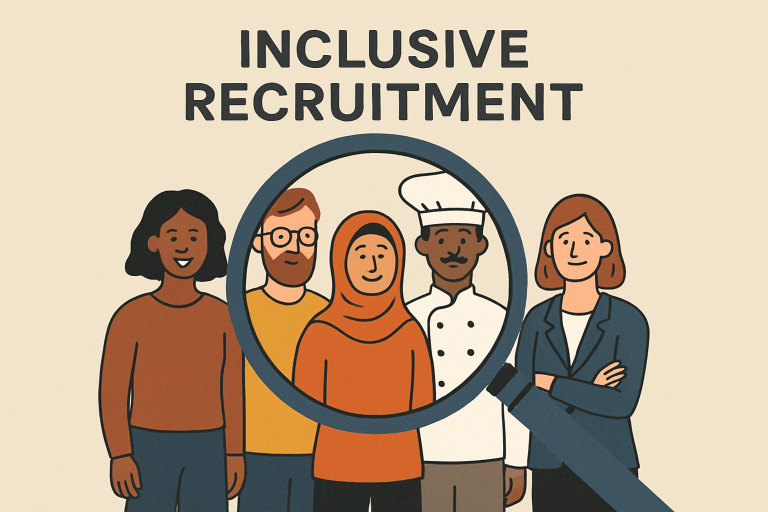
Why Representation Matters: The Business Case for Diverse Talent
Diverse teams are proven to outperform homogeneous groups when it comes to innovation, creative problem-solving, and resilience. A workforce comprising a diverse array of backgrounds generates fresh perspectives, which in turn drive better business decisions and open up new market opportunities. In fact, organizations with robust diversity initiatives and a focus on Building Diverse Talent Pipelines not only foster a more enriching workplace but also achieve higher productivity and stronger financial performance.
To build these high-performing teams, many leading organizations have adopted intentional diversity sourcing methods. These strategies focus specifically on casting a wider net and rooting out unconscious bias, ensuring that both recruitment efforts and hiring outcomes reflect the broadest possible pool of qualified talent.
Recognizing and Removing Bias at Every Hiring Stage
Despite the best intentions, unconscious bias can seep into every phase of the recruiting process—from where jobs are posted to who gets called for an interview and how candidate fit is assessed. Addressing these hidden pitfalls begins with acknowledging their existence. Companies leading the way in inclusive recruitment often employ tools like blind resume reviews, which strip identifying information that could trigger bias, and structured interviews, where every applicant is asked the same set of questions to promote consistency and fairness. A recent Forbes article on reducing hiring bias against women explains that HR plays a crucial role in implementing these strategies to dismantle systemic barriers at their roots.
Adopting these practices not only increases fairness but also ensures that hiring teams focus on skills and potential rather than background. This shift makes it more likely for underrepresented candidates to advance based on merit.
Building Targeted Talent Pools Through Outreach
Effective inclusive recruitment goes beyond posting job ads in conventional places. Proactively reaching out to underrepresented groups—through partnerships with Historically Black Colleges and Universities (HBCUs), bootcamps that focus on women or people of color in tech, and advocacy organizations—widens your talent pool. Creating relationships with community organizations and participating in career fairs that focus on diversity can help spotlight your company as a welcoming workplace for all.
By consistently engaging with diverse communities and talent pipelines, organizations strengthen their employer brand and uncover candidates with unique skills or backgrounds that are often overlooked by traditional recruiting channels.

Crafting Inclusive Job Descriptions and Ads
Language matters. Job postings that use inclusive, non-gendered language and avoid unnecessary jargon attract a broader range of applicants. For instance, replacing terms like “rockstar” or “ninja” with “team player” or “problem solver” can make listings more accessible and less intimidating. Additionally, being explicit about a commitment to diversity and the availability of accommodations signals your company’s values up front.
Consider clarifying what qualifications are truly required versus “nice to have.” This helps candidates who may self-select out due to imposter syndrome—an especially common barrier for women and people from marginalized groups.
Designing an Equitable Candidate Experience
An equitable recruiting process starts with accessible applications, clear instructions, and reasonable accommodations for candidates with disabilities. Technology can help simplify applications and ensure mobile access. Once a candidate is in your pipeline, timely and transparent communication builds trust and reduces anxiety, especially for those who have historically encountered barriers to employment.
Ensuring interview panels are diverse and providing interviewers with training can further minimize bias throughout the process, resulting in a more accurate evaluation of candidate capabilities.
Bias Training and Inclusive Onboarding for Longevity
Recruitment is just the first step. Ongoing awareness and diligence about bias across hiring teams are critical for supporting an inclusive workplace culture. Regular bias training helps staff recognize their personal blind spots and make conscious, informed decisions. Once new hires come aboard, onboarding programs that focus on belonging, mentorship, and inclusive practices boost retention and satisfaction. Together, these efforts go beyond hiring—they are essential for Building Diverse Talent Pipelines that sustain equity and inclusion over the long term.
Measuring Success: Using Data to Improve Recruitment Outcomes
To drive continuous progress, companies must regularly measure and analyze diversity recruiting efforts. Key performance indicators (KPIs) might include the percentage of diverse candidates at each stage, offer acceptance rates by demographic, or overall workforce composition. Transparency and sharing aggregate data can drive accountability and provide benchmarks for improvement.
When results fall short of goals, revisiting sourcing strategies, evaluation criteria, and onboarding processes ensures learning and ongoing refinement. Openness to feedback and adaptability are hallmarks of organizations that continually improve their approach to inclusive hiring.
Fostering a Culture Where Diverse Talent Thrives
A truly inclusive pipeline is only effective if diverse talent feels welcomed and empowered to excel. Leadership plays a vital role by championing DEI (Diversity, Equity, and Inclusion) initiatives, modeling inclusive behaviors, and backing policies that support psychological safety.
Ultimately, inclusive recruitment is not a checkbox—it’s a continuous journey toward equity. By Building Diverse Talent Pipelines, investing effort, leveraging data, and nurturing supportive environments, organizations can ensure that all talent—regardless of background—has an equal opportunity to contribute and thrive.






